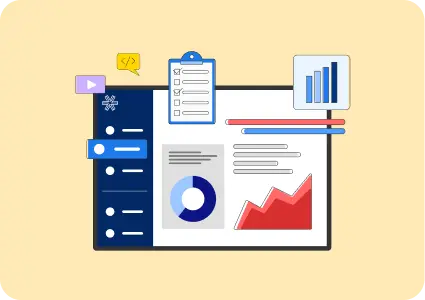The finance industry is experiencing a transformative shift with the rise of open banking. By using third-party providers (TPPs) through Application Programming Interfaces (APIs), consumers can easily share their financial data. Imagine budgeting apps that automatically categorize your spending, loan applications pre-filled with your financial information, and investment platforms tailored to your unique financial goals.
However, with increased connectivity comes a new set of security challenges. Fraudsters are constantly adapting and changing their tactics, and open banking fraud has become more prevalent.
To help increase awareness, this blog dives into the different types of fraud in open banking. Through the help of Brankas, a trusted open finance technology provider, we can help you work towards a more secure financial future for your business.
What is Open Banking Fraud?
Unlike traditional online banking fraud, open banking fraud focuses on unauthorized access to customer data through open banking connections. Instead of targeting your user’s login credentials to steal funds directly, fraudsters aim to exploit connections to access a broader range of financial information.
The open banking ecosystem introduces unique risks of open banking fraud compared to traditional banking systems. Some of them include:

Open banking relies on APIs for data sharing, creating potential access points for exploitation if not properly secured. Think of APIs as a link that connects banks and TPPs to allow them to exchange data securely. So, if there are weaknesses in your link, these connections become vulnerable to fraudulent activities.

The involvement of TPPs and data aggregators introduces more players into the ecosystem, increasing the attack surface. This complexity creates more potential entry points for your business system to get exploited.

Consumers rely on third-party applications to utilize open banking features. So, the security of these applications you use is equally important as the security of a bank's systems.
Ultimately, the connectivity APIs offer opens more doors for scammers to go into. This is why applying robust security systems like Brankas’ advanced fraud detection is needed for your company’s financial infrastructure.
The Common Types of Fraud in Open Banking
Since open banking is generally a wide and interconnected system, there are different vulnerabilities and types of banking fraud your business should watch out for. A few of the most common ones are:
Account Takeover (ATO) through Open Banking APIs
Fraudsters can steal login credentials (username and password) for a victim's bank account. They can then use these stolen credentials to access the victim's account through open banking APIs connected to TPP applications.
Once inside, they can initiate unauthorized transactions, transfer funds, or make payments, bypassing traditional security measures.

Data Scraping
Malicious actors can attempt to scrape customer financial data exposed through open banking APIs. This could involve exploiting vulnerabilities in API security or using automated tools to collect sensitive information like account balances, transaction history, or even income details.
This stolen data could be used for identity theft, sold on the dark web, or used to target other financial institutions.

Third-Party Provider (TPP) Fraud
A compromised or fraudulent TPP can potentially misuse access to customer data through open banking connections. This can involve unauthorized data collection beyond what's necessary for their service (like selling data to third parties), manipulating transactions initiated through their platform (like inflating invoice amounts), or even facilitating money laundering activities by moving stolen funds through the system.

Payment Injection Fraud
Fraudsters can exploit vulnerabilities in open banking APIs to manipulate or inject unauthorized payments. This can involve creating fake invoices through a TPP application or altering existing payment amounts to steal funds from the victim's account.

Man-in-the-Middle Attacks
In a man-in-the-middle attack, fraudsters intercept communication between a user and a TPP application. They can trick the user into visiting a fake login page, exploit unsecured Wi-Fi connections to steal login credentials, or manipulate data being transmitted through open banking APIs.
These are just a few examples of fraudulent activities that can happen in opening banking. And as this technology evolves, so can the tactics of fraudsters. It's crucial for your organization to be aware of these potential threats and implement strong security measures to prevent them.
Mitigating the Open Banking Fraud Types
Learning what fraud detection is in open banking is the first step to prevention. Combating them, on the other hand, requires a multi-layered approach:
Strong Multi-Factor Authentication (MFA) and biometrics: Using MFA and biometrics in your financial infrastructure adds an extra layer of security beyond passwords. This makes it more difficult for unauthorized users to gain access to the accounts or TPP applications registered in your system.
Your clients can use fingerprint or a unique code sent to their phone alongside their passwords for additional protection. Usually, products like Visa card data can recommend or even require this type of authentication to deter potential fraudulent activities.
Robust API Security: Open banking relies heavily on APIs for data sharing which is why implementing security measures for open banking is crucial. This includes measures like:
- Encryption: Scrambling your client’s financial data into an unreadable format to protect it at rest (stored on servers) and in transit (being transmitted between systems).
- Access Controls: Restricting access to APIs only to your designated authorized users and applications. Think of it like a locked door with specific keys for authorized personnel.
- Regular Vulnerability Assessments: Proactively identify and address your financial ecosystem’s weaknesses in API security through regular testing and security audits.
Secure payment walls are generally used in e-commerce platforms to ensure the safety of all users’ financial information. For instance, Brankas’ Merchant Link has built-in advanced security systems to protect your clients against fraud.
Consumer Education: Empowering your users with knowledge about open banking security is important. Educating them on best practices like:
- Using strong and unique passwords for both their bank accounts and TPP applications.
- Avoiding suspicious links and emails claiming to be from banks or TPPs.
- Being vigilant about unexpected account activity and reporting any suspicious behavior immediately.
Preventing fraudulent activities is a continuous responsibility that your business and clients should practice. By employing these methods, you can minimize data breaches and guarantee secure financial systems for your business and users.
Securing Your Financial Infrastructure with Brankas
Vigilance and proactive measures are essential for securing your organization’s open banking ecosystem. By understanding the different types of fraud and implementing effective safety measures, you can ensure the smooth exchange of financial data in your system.
Here at Brankas, we understand the importance of fraud detection systems and how they can positively affect your business. And with our commitment to providing reliable, modern, and seamless financial services, trust that we can create a secure and tailored financial solution for your organization.




